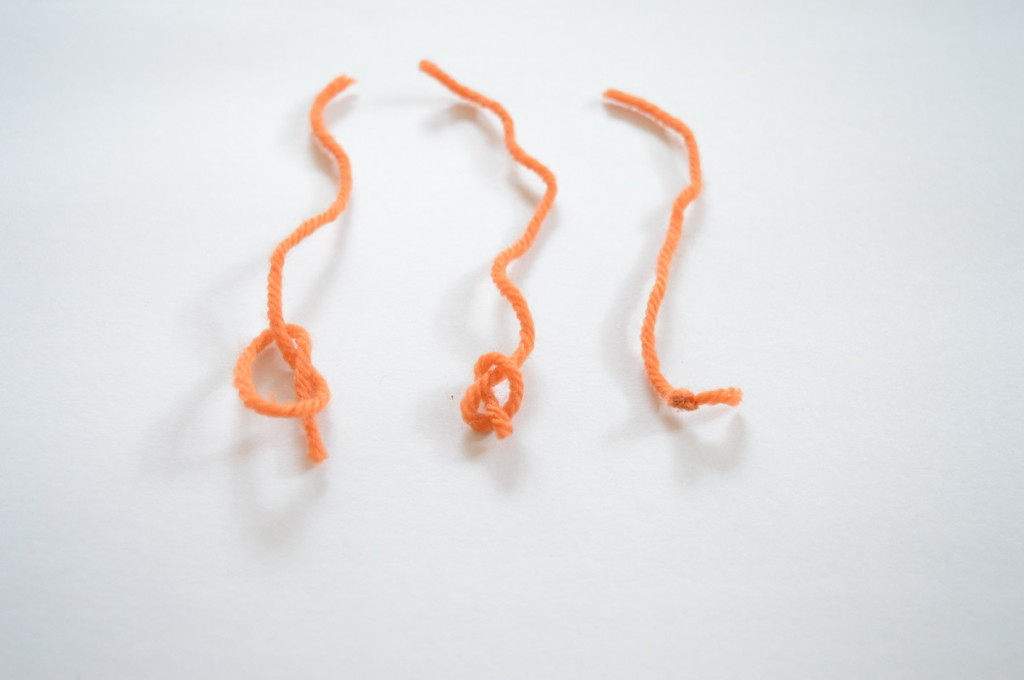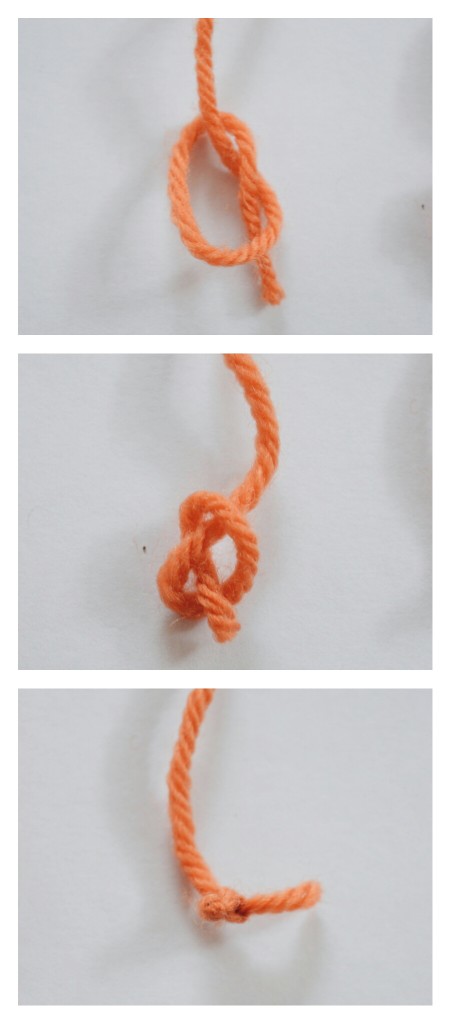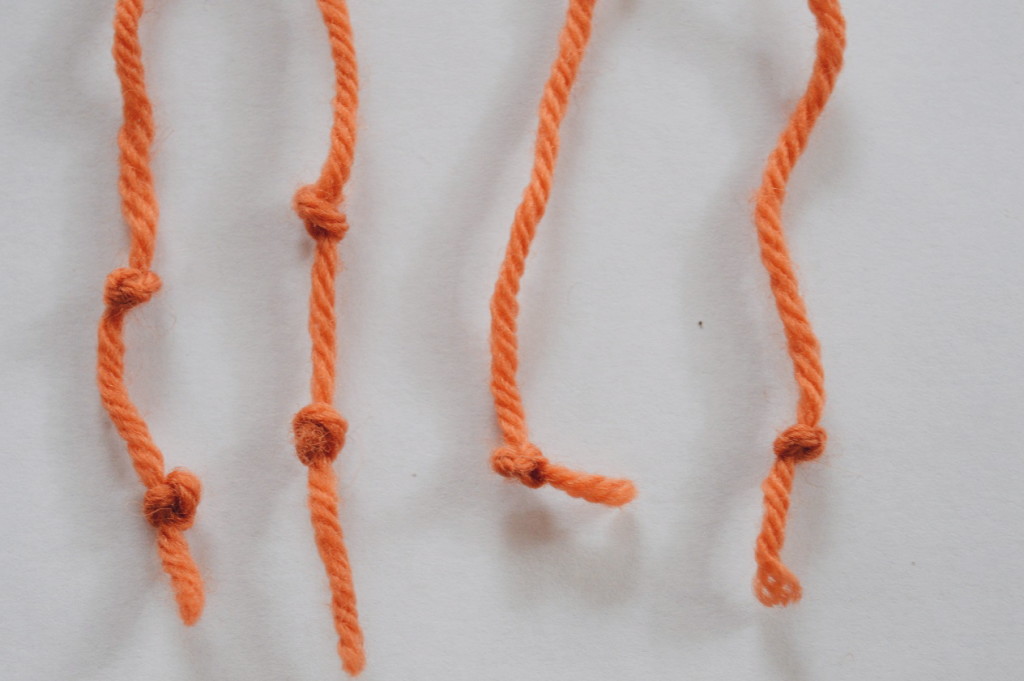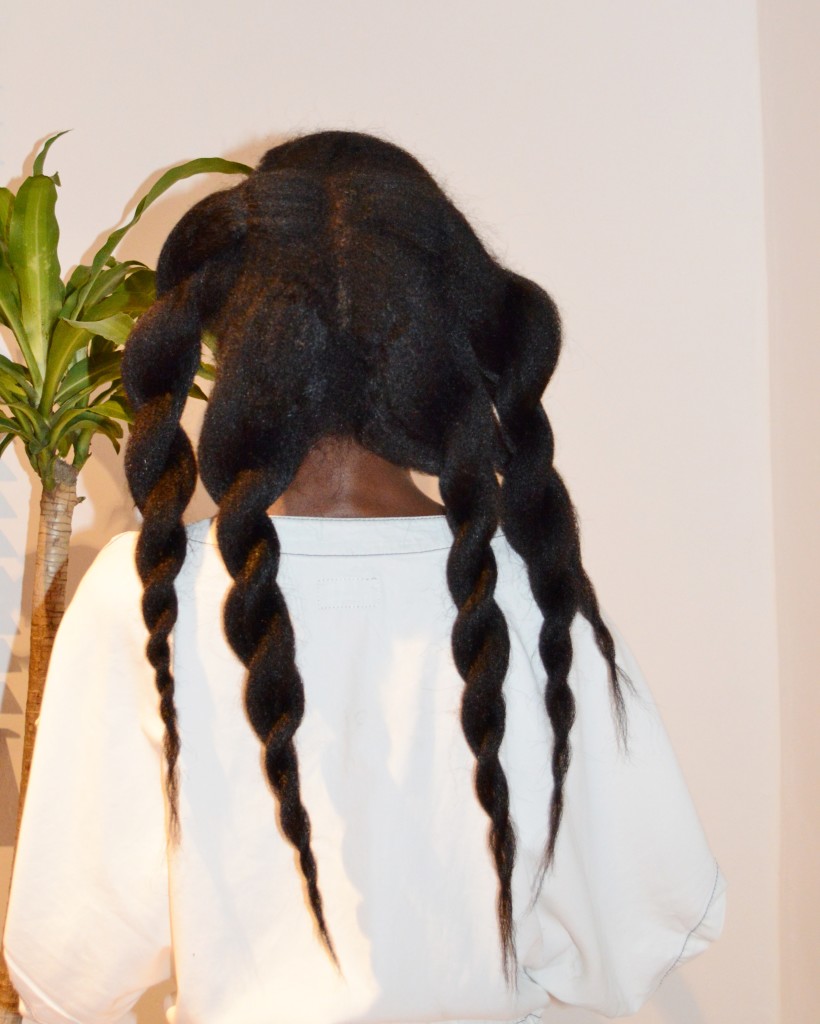
I used some knitting wool for illustration. Lets pretend that these are strands of hair.
Knots, tangles and matted hair can easily lead to breakage and damage so it is best to avoid them.
A common problem many natural haired ladies complain about is single strand knots also known as fairy knots. Although texlaxed and relaxed ladies can experience this sometimes it is far more common for natural haired ladies.
I am writing this post as an attempt to ensure posts on Hairducation cater to ladies of all hair types. In this post I will discuss what single strand knots are, the effects they have on hair, how to avoid getting them and what to do if you already have them.
WHAT ARE SINGLE STRAND KNOTS
Single strand knots occur when one strand of hair folds unto itself and forms a knot which eventually tightens until it forms a very tiny firm knot. They tend to occur towards the ends ( last few inches) of each strand of hair.

Some strands may have one single knot while others may have several knots of each strand ( see the picture below.

I tend to notice the ones in my hair when I am moisturising and sealing and I feel the tiny knot towards the ends. The reason they occur more often in ladies with natural hair is because their hair is full of curls, coils and kinks which curl and wind around itself more easily and more often than straight hair.
EFFECTS OF SINGLE STRAND KNOTS
Single strand knots can lead to bigger knots and tangles if other strands of hair latch on to the knot. Because the knots tend to become noticeable when it has already become extremely tight, it is often difficult to undo. Most times, they have to be cut out which will lead to thinner ends and shorter hair over time especially if there are loads knots to get rid off.
HOW TO KEEP THEM AT BAY
The following are normal parts of a hair regimen which we should be completing. It may not be possible to have hair that is 100% free of single strand knots but if you are notice that you are getting more and more single strand knots in your hair it me be a sign that you are slacking on one of the points below.
1) Keep your hair detangled and stretched
Knots are more likely to form when natural hair is left in its shrunken state. Natural that is well detangled and stretched is less likely to latch on to itself and form a knot. Thorough detangling can be time consuming but if longer thicker hair is what you desire you have to be willing to put in the time and effort it takes to retain as much length as possible. I tend to notice single strand knots in my hair when I’ve slacked on detangling for a few days.
This is a good point to remind us all that fingers are what should be used to detangle not a comb. Your fingers can feel and remove tangles in your hair whilst a comb will simply pull or tear through a tangle. Combs should only be used to smoothen hair after it has been finger detangled.
2) Moisturise and seal regularly
Moisturising and sealing helps to soften hair. The oil or butter which seals in moisture and lubricates the hair thereby reducing friction between the hair fibres. This helps the hair to slide more easily and have less chance of catching and looping round itself to form a single stand knot.
3)Wear protective styles
Styles such as buns, chignons and up-do’s protect our hair from physical and environmental damage but they also play a major role in keeping single strand knots at bay. These styles keep the hair confined so that it is not free to move and tangle around its self. They also help to keep natural hair stretched for longer.
HOW TO GET RID OF SINGLE STRAND KNOTS
If you already have single strand knot, what should you do? Cut it off. Some ladies try to untangle single starnd knots but this is usually only possible IF the knot is still a little loose. If however the knot has tightened and is very taut the best thing to do is to cut the knot out using a sharp hair shears/scissors.
I hope you have enjoyed this post and that you found it worth reading. Have you experienced single strand knots? What do you think is the cause of you getting them in your hair?
I have my final review of the Nazuri Curls review, another bun of the month pictorial and a hair update coming up next so come back soon ladies.
x
Lade
Learn | Change | Grow




